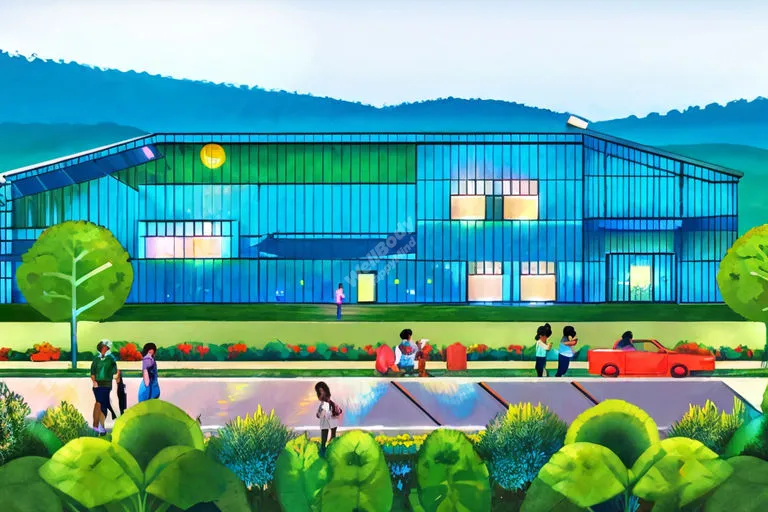5 Key Elements of Effective Mental Health Community Programs

Mental health is a crucial aspect of our overall well-being. As more people recognize its importance, mental health community programs have become vital in supporting individuals and families. These programs offer local, accessible care that can make a real difference in people’s lives. But what makes these initiatives truly effective? Let’s explore the five key elements that contribute to successful mental health community programs.
I. Introduction
Did you know that one in five adults in the United States experiences a mental illness each year? This startling statistic highlights the pressing need for effective mental health support in our communities. Mental health community programs play a crucial role in addressing this need, offering hope and help to those who struggle with mental health challenges.
In this article, we’ll dive into the five essential elements that make these programs truly effective. By understanding these key components, we can better support and improve mental health initiatives in our own communities.
II. Element 1: Accessibility and Inclusivity

Imagine needing help but finding every door closed. That’s the reality for many people seeking mental health support. That’s why accessibility and inclusivity are the foundation of effective mental health community programs.
Why is accessibility so important?
- It removes barriers to care
- It ensures timely support
- It promotes early intervention
To create truly inclusive programs, communities should focus on:
- Location: Placing services in easy-to-reach areas
- Cost: Offering affordable or sliding-scale fees
- Language support: Providing services in multiple languages
- Cultural sensitivity: Respecting diverse backgrounds and beliefs
By prioritizing accessibility and inclusivity, mental health programs can reach more people and make a bigger impact.
III. Element 2: Comprehensive Services

Mental health isn’t one-size-fits-all. Effective community programs recognize this by offering a wide range of services to meet diverse needs.
What does a comprehensive mental health program look like?
- Counseling: One-on-one support for individual needs
- Support groups: Peer-led sessions for shared experiences
- Crisis intervention: Immediate help for urgent situations
- Prevention programs: Initiatives to promote mental wellness
Why is a comprehensive approach important?
- It addresses various mental health needs
- It provides continuity of care
- It increases the chances of positive outcomes
Integration with other community services is also key. By connecting with schools, workplaces, and healthcare providers, mental health programs can create a network of support that touches all aspects of community life.
IV. Element 3: Qualified and Compassionate Staff

The heart of any effective mental health community program is its people. Having qualified and compassionate staff can make or break a program’s success.
Why are qualified professionals crucial?
- They provide accurate diagnoses
- They offer evidence-based treatments
- They ensure ethical and safe practices
But qualifications alone aren’t enough. The most effective mental health workers possess key qualities that enhance their ability to help others:
- Empathy: Understanding and sharing the feelings of others
- Cultural competence: Respecting and adapting to diverse backgrounds
- Ongoing training: Staying up-to-date with the latest mental health practices
A study published in the Journal of Clinical Psychology found that therapist empathy was a significant predictor of treatment success. This underscores the importance of not just knowledge, but also compassion in mental health care.
V. Element 4: Community Engagement and Education

Breaking down walls of stigma is crucial for mental health programs to thrive. Community engagement and education play a vital role in this process.
Why is reducing stigma important?
- It encourages people to seek help
- It promotes understanding and support
- It creates a healthier community overall
Effective strategies for community involvement include:
- Awareness campaigns: Spreading accurate information about mental health
- Workshops: Teaching coping skills and mental health first aid
- Partnerships with local organizations: Extending reach and resources
Benefits of mental health education in the community:
- Increased mental health literacy
- Earlier detection of mental health issues
- Improved support networks
A report by the World Health Organization states that community-based mental health education can lead to a 20% reduction in depression rates. This shows the powerful impact of engaging and educating the community.
By fostering an environment of openness and understanding, mental health community programs can create a ripple effect of positive change.
VI. Element 5: Continuous Evaluation and Improvement

Even the best-designed programs need regular check-ups. Continuous evaluation and improvement are key to ensuring mental health community programs remain effective over time.
Why is measuring program effectiveness crucial?
- It helps identify what’s working and what’s not
- It justifies funding and support
- It guides future improvements
Methods for gathering feedback and data include:
- Surveys: Collecting opinions from program participants
- Focus groups: In-depth discussions with small groups
- Outcome tracking: Measuring changes in participants’ mental health over time
Using data to refine services:
- Identify areas for improvement
- Adapt to changing community needs
- Implement evidence-based practices
A study in the Journal of Consulting and Clinical Psychology found that programs using routine outcome monitoring showed significantly better treatment outcomes. This highlights the importance of ongoing evaluation in mental health care.
VII. Conclusion

Let’s recap the 5 key elements of effective mental health community programs:
- Accessibility and Inclusivity
- Comprehensive Services
- Qualified and Compassionate Staff
- Community Engagement and Education
- Continuous Evaluation and Improvement
These elements work together to create programs that truly make a difference. Well-designed community mental health initiatives can transform lives, offering hope and support to those who need it most.
The impact of these programs extends beyond individuals. They strengthen families, improve workplace productivity, and create more resilient communities. According to the World Health Organization, every $1 invested in mental health treatment can yield a return of $4 in improved health and productivity.
What can you do to support mental health in your community?
- Get involved: Volunteer or participate in local mental health programs
- Spread awareness: Share accurate information about mental health
- Advocate: Support policies that prioritize mental health services
- Seek help when needed: Utilize available resources for your own mental well-being
Remember, mental health is everyone’s business. By supporting effective community programs, we can create a world where mental health is valued, protected, and nurtured.
Take action today. Reach out to a local mental health organization and ask how you can contribute. Together, we can build stronger, healthier communities – one mind at a time.



